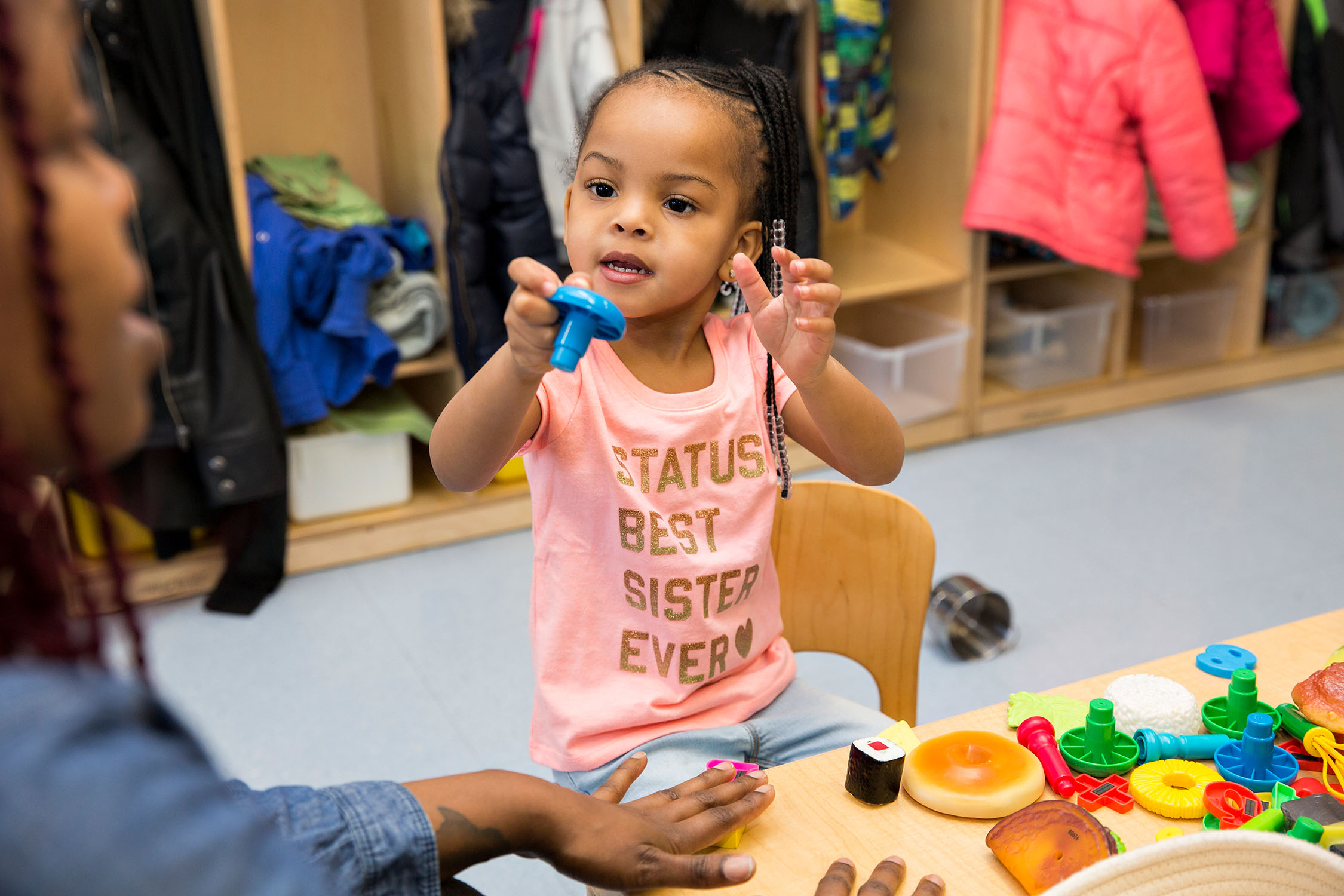Pre-k is for social-emotional development and that seems to be missing remotely. I can see it working for older grades, such as 3rd grade and beyond but nothing under. The children cannot really interact – they cannot practice sharing or other social skills and that is the most important in pre-k. – Workforce Survey Participant
The New York Early Childhood Professional Development Institute, in partnership with the Bank Street College of Education, recently completed a survey to understand the impact of the COVID-19 pandemic on New York’s early childhood workforce. The survey included early childhood program leaders, teachers, and family child care providers. Over 3,000 individuals who are members of the state’s Aspire Registry responded. The survey sought to provide a descriptive snapshot of the workforce during the pandemic in order to stimulate dialogue to help the field navigate this crisis.
One of the areas the report highlights are the challenges educators experienced when trying to support children’s social and emotional development remotely. I have felt this frustration while remote teaching with my class of four- and five-year-olds and have heard similar sentiments during discussions with colleagues. As early childhood educators, we spend a great deal of time planning engaging classroom spaces and lessons with the objective of encouraging the play and overall socializing experiences that are so crucial in the early years. Remote learning made this a difficult task.
In an effort to create some of these engaging, social lessons, we are learning how to transfer strategies used in the classroom to this new way of teaching. We are finding it is essential to first address the social-emotional needs of children.
While there are many resources for social and emotional learning available online, navigating these resources and adapting them to meet the needs of our youngest students and needs of our families can be challenging. As one survey respondent expressed “…There’s lots of activity ideas online, but I need activities that I can share with families that require no materials/very few low-cost, already-at-home, not-currently-an-essential-item materials/little to no prep work AND can be done with siblings if needed.” The Center for Emotionally Responsive Practice at Bank Street recently released a guide about emotionally responsive practice during remote learning which includes practical themes and activities.
In my classroom, we experimented with several strategies to meet the social-emotional needs of children remotely:
- First, our work involved engaging and empowering families. After meeting remotely with families, we decided together on what kinds of activities would be reasonable for the lessons in which we could have rich interactions with the children. This family engagement was a key part of planning. Families were able to share what kind of content and formats (e.g., small group activities, movement and dancing) best fit into their new schedule and were able to describe the feelings children were expressing at home.
- Second, we created opportunities for the children to express their feelings. We engaged in lessons focused on feelings and also integrated discussions about feelings into our other lessons.
- Third, we supported children in using transitional objects to help to strengthen the connection between home and the school community. An example of where these components came together and led to the most engagement were our lessons that involved children finding an object at home and sharing about it during the live session. We decided ahead of time on the parameters for the type of object and created a schedule so each child would have time to share. Families were sent reminders about the activity through Google Classroom and email. During the lessons, children were encouraged to ask each other questions and to make comments about the objects. Teachers provided guidance as needed. Children were eager to share about how they used the object at home. This lesson fulfilled a social-emotional need for children as it supported object constancy -”the ability to keep an important person or place in mind even when one is far away from them. Young children have a hard time staying connected to people and places they don’t see on a regular basis” (The Center for Emotionally Responsive Practice at Bank Street College, 2020).
- Fourth, we made spaces in which we could engage in responsive play-based interactions and children could express a range of feelings. A colleague who works with two-year-olds initiated small group times with parallel play. Children, family members, and teachers had different toys that they used at home. Teachers could make observations that acknowledged children’s social and emotional development while modeling play and language. In my class we had movement breaks and found joy and excitement when we’d dance together, just like we did before remote learning.
- Importantly, we found flexibility and adaptability were important parts of addressing the social-emotional needs of children. While we often planned in detail, our implementation shifted to meet children and families where they were in the moment, even if that meant some of our ideas were not included in the final lesson. We learned things were okay even if they didn’t go according to the plan. Sometimes lessons were more meaningful when we were more open. For example, our suggested reading list and recorded storytime often were changed or reduced based on what occurred during our live sessions.
While we often still felt a sense of loss of our engaging play spaces at school, these lessons were helpful in acknowledging the social-emotional needs of children by creating opportunities where teachers and children came together as active participants in the time we had together. As we look forward to children possibly entering our classrooms with some degree of remote learning, we are thinking about how to meaningfully engage children and ensure our pedagogy reflects the needs of our students while acknowledging the limitations of this virtual format. We are engaging families, providing opportunities for children to lead conversations and share their feelings, using smaller groups when possible, and creating a variety of play situations.
Read the full report: New York Early Care and Education Survey: Understanding the Impact of COVID-19 on New York Early Childhood System
What strategies have you found successful for effective social-emotional engagement while remote teaching?
Erica Yardy is a Research Associate with the New York City Early Childhood Research Network, a project of the New York Early Childhood Professional Institute, and is a preschool teacher in White Plains, New York. She received her Master’s in Early Childhood Special Education from the University of Illinois at Urbana Champaign and has previously taught in New York City and Barbados.



